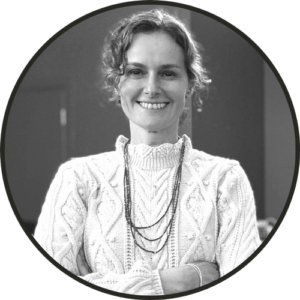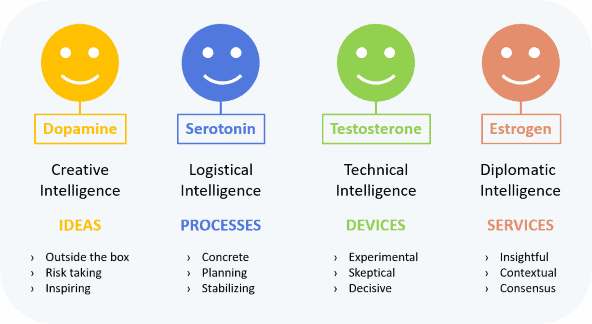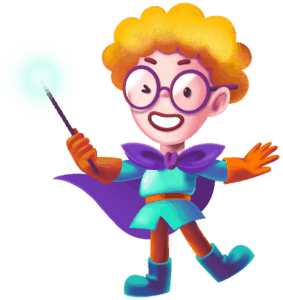“ENTJ?”; I was in my 20s when I did my first Myers Briggs personality test working in Corporate America. It was quite revealing to understand that most of our differences emanate from the way we extract our energy or we process information.
As an ENTJ, I became more conscious of how my long term, big idea orientation and being forceful in presenting my ideas would be frustrating to say ISFPs who prefer solving problems for the present moment and do not appreciate enforcement of ideas especially if they are presented in a contentious manner due to their aversion to conflict.
What if Myers Briggs were taken to a whole new level incorporating latest research on neuro science? What if all this research on why we love, how we pick our mates could be applied to how people innovate? What if match.com algorithms which determine what types of temperaments we have could guide us in the business world in picking teams?
These were some of the questions Dr Helen Fischer, renowned biological anthropologist, neuroscientist, TED All Star, asked herself before she went ahead and set up Neuro Color, a company she co-founded to help companies and individuals create new opportunities for growth not previously possible with “personality type” assessments.
Listening to her speak at the P&G Alumni Innovation Event in Cincinnati last week was eye opening.
She discovered that after years of researching as match.com’s Chief Science Officer, how people pick romantic partners are very much related to how people work together, how people innovate. Well, we are the same people, it is the same brain, right?
Her premise is simple: the 4 broad brain systems, each explained by a hormone (dopamine, serotonin, testosterone and estrogen) are linked to personality. Everybody has all four but the intensity and mix are different for each person.
So, what are the 4 brain systems? What does each system display in terms of temperament?
1. Dopamine:
Born free– novelty seekers, not just in the physical world, but also in mental exploration. Optimistic, enthusiastic energy balls. They are independent, spontaneous, generous. They have mental flexibility, are open minded. They think out of the box. They’re risk taking and inspiring. They represent creative intelligence. They are also susceptible to boredom and they can be reckless.
Ideal role in innovation: idea generation.
They tend to enjoy working with (and fall in love) with their own kind although opposite can be true for extreme novelty seekers. 🙂
2. Serotonin:
seek order– they follow rules, they are conventional, structured. They like predictability. They plan ahead. They are calm, modest and loyal. (You want them in love as well as in business). They represent logistical intelligence. They can also be closed minded and rigid.
Ideal role in innovation: processes, quality control, efficiency.
Their tendency is to pick their own kind.
3.Testosterone:
shoot for the stars– they are analytical, logical, inventive and experimental (math majors, engineers, musicians tend to be this type). They are rank oriented and competitive. They are honest, emotionally contained, decisive and bold. They have deep focus and are demanding. They represent technical intelligence. They also can be impatient, uncompromising in addition to being less emphatic and aloof
Ideal role in innovation: Devices, technology.
Both in love and at work, they tend to get along with the opposite kind.
4.Estrogen:
Philosopher king– They engage in “web thinking”: holistic, contextual. They are insightful, have long term views, imaginative, have mentality flexibility. They have good verbal skills. They are intuitive, trusting, empathetic, introspective (everything has a meaning!) They represent diplomatic intelligence. They also can be scattered brain and indecisive
Ideal role in innovation: Services.
They fall in love or prefer to work with the opposite kind.
What do you think?
- Which personality type(s) are you most dominant of?
- Can you think of the team you work with in terms of these systems and potentially calibrate roles to increase effectiveness?
We are built to live in teams that contain all four types of personality traits where everybody respects and understands each other. When you drive innovation in a function like supply chain that spans the entire organization, from production to distribution to sales and marketing, can you take the complexity and convert it into an advantage of diversity by utilizing people resources properly?
After Dr Fischer’s talk, my answer to that was more of a resounding YES!











